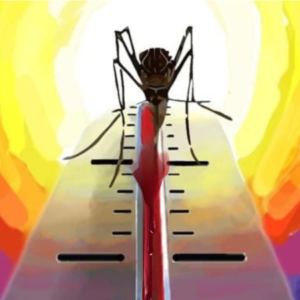Anaemia is a major public health concern worldwide. According to WHO estimates, anaemia affects 30% of women aged 15 to 49, 37% of pregnant women, and 40% of children aged 6 to 59 months globally.
In India, the NFHS 5 report suggests that the percentages of anaemic population have increased and are more than 65% for children under 5 years of age, about 57% for women of reproductive age, and 25 % for men aged 15–49 years.
According to the SDG report for 2020–21, all seven states in the Central and East Region, i.e., Madhya Pradesh, West Bengal, Chhattisgarh, Odisha, Uttar Pradesh, Jharkhand, and Bihar, are considered under the aspirants’ category for SDG 2, with scores between 0 and 49. Except West Bengal, all are classified as Empowered Action Group (EAG) states as well. All of these states have a higher percentage of their population in the lowest wealth quintile. In India, all the states from the Central and East regions have a high prevalence of anaemia, more than 60% among children age 6–59 months; more than 50% among women age 15–49 years; and on average, about 28% of men age 15–49 years are anaemic.
On analyzing the NFHS 3 to NFHS 5 data for central and East India for children under 5 years of age; the estimates suggests that the prevalence of anemia was very high during NFHS 3, and a declining trend can be observed during NFHS 4. However, a significant increase can be noted during NFHS 5 with an exception in Jharkhand.
For Children under 5 years of age, Chhattisgarh has shown a rise of about 26 % in anemia cases, followed by Odisha (19.6 %) and West Bengal (15 %) and it ranges between 3-6 % for the remaining states.
Iron- deficiency anaemia during pregnancy severely impacts the maternal health as well as the health and well-being of the growing foetus. It may lead to intrauterine growth retardation, still birth, low birth babies. The children with iron deficiency anaemia may suffer developmental issues like poor cognition, weak motor development and may also increases the likelihood of mortality.
Prevalence of anaemia is more than 45 % among pregnant women in all these states, with Bihar (63 %), Odisha (62%) and West Bengal (62 %) having the highest percentages.
The percentage of pregnant women who have taken IFA tablets for at least 180 days is less than 40% in all the mentioned states (9% to 34%) during antenatal care. The Anaemia Mukt Bharat Score Card, 2019, however, indicates that the percentage of IFA coverage among pregnant women is between 75 and 95%.
Anaemia may occur due to inadequate nutrition, infections, long-term illnesses, heavy menstruation, pregnancy problems, and family history. A common underlying cause is a lack of iron in the blood.
Malaria is also one of the contributing factors to anaemia. In India, apart from the north-eastern states, states such as Odisha, Chhattisgarh, Jharkhand, and Madhya Pradesh in the central and Eastern regions have the highest number of malaria cases.
The six interventions under Anaemia Mukt Bharat aim to promote a reduction in anaemia cases in India, targeting women and children. The strategies seem to be aiding in improved coverage of IFA in some states of Central and East India; however, accelerated efforts are required in other states. The Anaemia Mukt Bharat score card of 2019 and 2022 indicates that states have shown better progress in terms of IFA coverage from 2019 to 2022.
Chhattisgarh, which had only 3.4 % IFA coverage amongst children under 5 years of age in 2019, is now among the top 5 states with the highest IFA coverage, with 71% (2022). Similarly, the states of Odisha, Madhya Pradesh, and Jharkhand have also shown improved IFA coverage. However, in other states, such as Uttar Pradesh, the increase in IFA coverage is only 0.4%, and a reduction in IFA coverage can be noted in Bihar and West Bengal.
Though strategies have been effective for IFA coverage, this does not seldom guarantee its consumption. Anaemia Mukt Bharat tends to work on behaviour change in the community through various campaigns and strategies, yet an accelerated effort is required by states, as compliance with IFA consumption has always been a problem and a barrier to the reduction of anaemia cases due to many associated determinants, and this needs to be addressed at the priority, along with stringent monitoring of the implemented strategies.
About the Author: Isha Agrawal is Lecturer and Research Officer at Edward & Cynthia Institute of Public Health ( ECIPH)
Disclaimer: Views expressed are the author’s own. Edward & Cynthia Institute of Public Health or Yenepoya (Deemed to be University) are not responsible for contents or opinions reflected in this article.

Isha Agrawal
Isha Agrawal is Lecturer and Research Officer at Edward & Cynthia Institute of Public Health ( ECIPH)
-
Isha Agrawal#molongui-disabled-link




